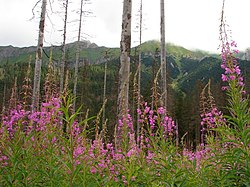Protected area
Protected areas or conservation areas are locations with special protection. They are protected because of their recognized natural, ecological or cultural importance. Areas are usually protected by law. The law can be local, from the country of the protected area, or even internationally.
Protected areas are important for biodiversity. They often provide an area safe from hunting or changes to the environment. This provides a safe habitat for threatened and endangered species. They are also important to protect naturally formed areas, like the Grand Canyon, from damage by humans.
There are many types of protected areas. One type is a marine protected area. A marine protected area is for seas, oceans, estuaries or large lakes.
Northeast Greenland National Park is an example of a protected area. The park protects a large variety of animals, such as musk oxen, walrus, and King Eider. Another example of a protected area is the Valley of the Kings in Egypt. This area is protected because it is an important archaeological site.
Protected Area Media
:Share of important terrerstrial biodiversity sites that are protected*Proportion of important sites for terrestrial biodiversity that are covered by protected areas shows temporal trends in the mean percentage of each important site for terrestrial biodiversity that is covered by designated protected areas.
Strict nature reserve Belianske Tatras in Slovakia
Black Opal Spring in Yellowstone National Park in the United States. Yellowstone, the world's second official protected area (after Mongolia's Bogd Khan Mountain), was declared a protected area in 1872, and it encompasses areas which are classified as both a National Park (Category II) and a Habitat Management Area (Category IV).
Schweizerischer National Park in the Swiss Alps is a Strict Nature Reserve (Category Ia).
The Jaldapara National Park in West Bengal, India, is a Habitat Management Area (Category IV).
Kuivajärvi, the Natura 2000 area in Tammela, Tavastia Proper, Finland










